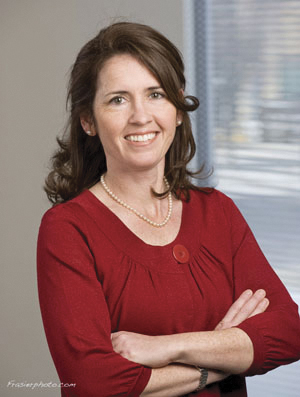Why Do Pediatricians Care About Climate Change?

Samantha Ahdoot, MD, FAAP
Oct. 26, 2015
Pediatricians, children and parents see the impact of climate change every day. Worsening heat waves and severe weather events, changing allergy seasons and shifting infectious disease patterns affect many children directly. It can be hard to make sense of it all, let alone know what to do about it.
Because of their growing minds and bodies, children are uniquely vulnerable to changes in their environment. A changing climate has a wide range of effects on the plants, animals and natural systems on which children depend for their own health, safety and security. Here are some examples:
Heat-related illness
As temperatures increase and heat waves become longer and more severe, heat-related illness is expected to increase. Young infants and high school athletes, especially football players, are at particularly elevated risk.
Air quality
Warmer summer temperatures can increase the concentration of ozone, or smog, in the air. Ozone is a strong lung irritant that causes asthma attacks, emergency department visits and hospitalizations. Wildfires, which are increasing due to climate change, produce toxic smoke that can travel for thousands of miles and cause respiratory illness. Pollen allergies can also be affected. Higher temperatures increase the length of the allergy season, particularly in Northern regions. Increased carbon dioxide concentrations in the atmosphere may independently increase pollen production by ragweed, a common cause of seasonal allergies.
"Because of their growing minds and bodies, children are uniquely vulnerable to changes in their environment."
Infectious diseases
Many factors, including climate, influence patterns of infectious diseases like Lyme disease, mosquito-borne illnesses like West Nile virus, and childhood diarrhea. Rising temperature has been linked to the northward spread of Lyme disease in the United States, putting more children at risk of this disease.
Extreme weather events
Children's unique needs place them at risk of injury or death, separation from or loss of caregivers, and mental health consequences following weather disasters. Disasters can also harm children through devastation of the community resources on which they rely for their healthy mental and physical development like schools and hospitals.
Food security
Agricultural productivity and food prices can be affected by extreme heat, drought, flood and rising sea levels. The nutrient content of major crops like wheat and rice may be altered by rising atmospheric carbon dioxide concentration.
Mental health
Children from communities affected by weather disasters are at high risk of post-traumatic stress disorder, anxiety and depression.
"Pediatricians, parents and our communities today have an unprecedented opportunity to protect our children and grandchildren."
What can we do?
Our country's leading scientific organizations and 97 percent of climate scientists tell us that climate change is happening today as a result of increasing levels of heat-trapping gases in our atmosphere. However, they also tell us that we can still prevent the most serious changes if we act now. Here are some things all of us can do:
- Pediatricians can promote medical educational opportunities and inform policymakers on the risks climate change poses to child health.
- Doctors can help families prepare for weather disasters.
- We can reduce our energy consumption at home, at work and on the road.
- We can bike, walk and use other modes of active transportation, which is good for our climate, and for our health.
- We can reduce, re-use and recycle.
- Kids can get involved by learning about climate change from NASA or via the Green Schools Alliance.
- Parents can join groups such as Mom's Clean Air Force to work on the local and national level to protect families.
- Pediatricians can help families prepare for weather disasters.
We all can advocate for policies that reduce greenhouse gas emissions. - Most importantly, you can let your political leaders know you care.
Policy efforts
The AAP has weighed in with policymakers on efforts that will help to clean our air and to protect future generations. This summer, the U.S. Environmental Protection Agency (EPA) released the Clean Power Plan, its final rule to limit carbon emissions from existing fossil fuel-fired power plants. Power plants are the nation's largest carbon pollution source, generating approximately one third of all U.S. greenhouse gas pollution, a leading contributor to climate change. When fully implemented in 2030, the EPA's proposed rule for existing power plants will result in 6,600 fewer premature deaths, 150,000 fewer child asthma attacks, 180,000 fewer missed school days, and 3,700 fewer cases of child bronchitis. In the near term, this AAP-supported plan would have an immediate impact on child health by reducing emission of other pollutants and the resulting creation of harmful ozone.
Act now
Pediatricians, parents and our communities today have an unprecedented opportunity to protect our children and grandchildren. Great challenges bring great opportunities. We can each protect the next generation by working together to prevent dangerous climate change, but to have a real impact we must act now.
AAP's climate change policy
In a policy statement and technical report published today by the American Academy of Pediatrics, the academy urges legislators and pediatricians to work together to reduce the threat of climate change on children's health. That means promoting real changes, from pediatricians' offices to Capitol Hill.
*The views expressed in this article are those of the author, and not necessarily those of the American Academy of Pediatrics.
About the Author
Samantha Ahdoot, MD, FAAP
Samantha Ahdoot, MD, FAAP, is the lead author of the American Academy of Pediatric's Policy Statement on Global Climate Change and Children's Health, which was updated on Oct. 26, 2015, and an accompanying Technical Report.